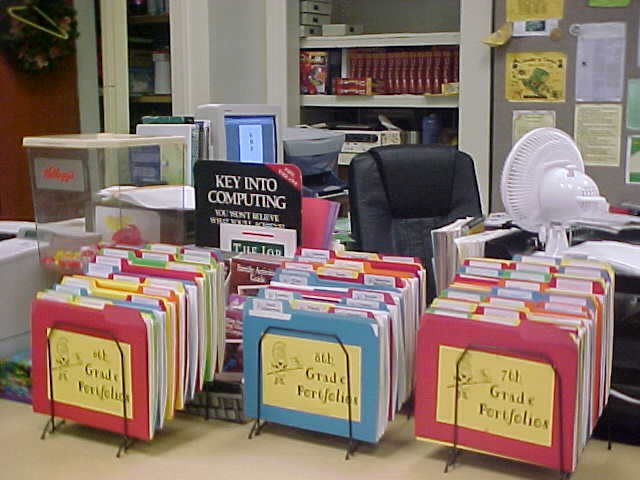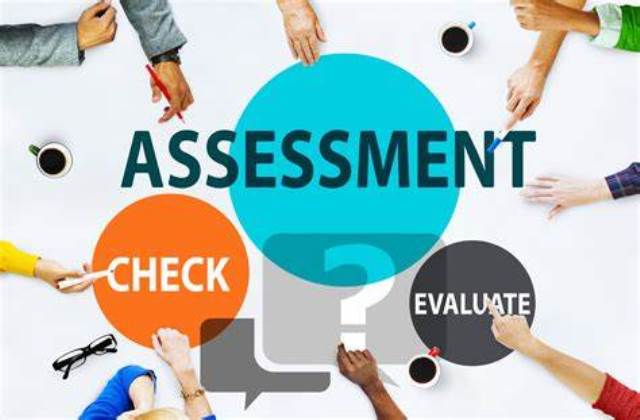For Students
Student Portfolios
Admin Sep 13, 2022 03:25 PM

TAGS
It is a challenging situation for teachers to make portfolios an essential part of their instruction. Some of the fundamental points to be considered in making portfolio an important learning and assessment tool are as follows;
- It should be consulted to teachers, students, parents and academic institute administrations in deciding which items would be a part of it.
- It should be designed in a way that it states the clear purpose for using portfolios. Students should clearly understand the purpose of it and for whom a portfolio is created.
- It should reflect and review the daily learning activities of students. Also, the items in portfolio should differ and be multi-dimensional.
- It should be continuous to show students’ their performance, efforts, growth, and accomplishments over a period of time.
- Contents of the portfolio should be structured, organized, purposeful, and relevant.
- It should give opportunities to students in selecting sections they consider most challenging as learners to be placed into their portfolios, and to establish certain relevant criteria for their selections. Also, it should prompt students to keep their portfolios up to date.
- It should be considered as a part of learning process that will enhance student's knowledge, rather than only a record keeping tool.
- Students have access to their portfolios.
- Students should be able to share the criteria that will be used to assess the work in the portfolio and view results.
- Teachers should give instructions & feedback to students, parents about the use of the portfolio
In conclusion, student portfolio is designed to recognize the learner in each student. The process has some necessary steps like; students’ key information should be taken to know about the student's strengths and weaknesses, each study should have a purpose, assessments done should be explained in detail so the students can process the information clearly , the information/results should cover a certain time period, portfolio should encourage the students to engage with the content and learn, also the contents of the portfolio should be multi-dimensional and should address different learning areas. Besides, it is virtually important that the studies in a portfolio should be designed and shown in a way that it presents students’ performance and development at any time period, in detail.
Types of Portfolio
There is no decided representation and content for student portfolios. The types of portfolios vary according to their purpose and contents however the main objective of it is that it can demonstrate a student's development. Therefore, many researchers have defined different types of portfolio. For example, according to Haladyn (1997), there are five types of portfolios
1. Ideal
2. Showcase
3. Documentation
4. Evaluation
5. Class portfolio.
The ideal portfolio contains students’ detailed information about their background, interests, choices and academic performance etc. Thus, it is necessary for students to assess their own portfolio. The showcase portfolio includes only the students’ best works. It is essential for students to select own works and to reflect on their works. These types of portfolio are not suitable to be assessed and graded. The documentation portfolio involves a collection of work done by the student over a period of time showing growth and improvement reflecting students' learning of identified outcomes. This portfolio contains quality and quantity data. The evaluation portfolio includes a standard and systematic collection of students’ work and could be determined by the teacher or, in some cases, by the student. This portfolio is suitable for grading students. The class portfolio contains student’s subject grades , teacher’s view and knowledge about students in the classroom. This portfolio can be defined as a classroom portfolio.

Melograno , who explained it more descriptively, has listed and defined nine types of portfolios. These types of portfolios are not exhaustive and can be used separately or in combination. The classifications are explained below
(a) Personal portfolio: For other students and educators to form a more integrated view about students and to recognize and acknowledge their interests, items may be included from within and outside school. The portfolio could contain pictures, awards &achievements, videos, or other collectibles. The personal portfolio serves as a catalyst for self-reflection and sharing.
(b) Working portfolio: The ongoing, methodical collection of student work samples and exhibits can be maintained in a working portfolio. This can be a collection of daily, weekly, monthly work products forms.
(c) Record-keeping portfolio: This type of portfolio is usually kept by educators. It contains necessary assessment samples and records that may be required (e.g., written exams, proficiency/mock tests). It could also include observational information (e.g., anecdotal notes, frequency index scales, narrative descriptors, behavior checklists) and progress reports that supplement traditional report cards.
(d) Group portfolio: Each member of a cooperative learning group provides individual items along with group items (e.g., samples, pictures, community project) to demonstrate the efficacy of the entire group.
(e) Thematic portfolio: This portfolio would relate to a unit of study with a particular focus or theme, normally lasting from 2 to 6 weeks. For example, if a portfolio is constructed related to "Rational Numbers", “Force” unit, this portfolio could reflect cognitive and effective skills and their views about these units.
(f) Integrated portfolio: To view the entire student profile, works from all disciplines showing connections between or among subjects would be included. Items that are either essential or optional may be chosen from a variety of themes. For instance, this portfolio could be created in a science or math course.
(g) Portfolio showcase: A small selection of things is chosen to show development over time and to fulfil a certain function. Only the student's greatest works are often featured. For instance, a writing portfolio must include work from several pre-established literary genres. A mathematics portfolio is based on collections of students' open-ended replies to challenging arithmetic problems.
(h) Electronic portfolios: Thanks to technological development, they are now possible. However, they are essentially no different from a hanging file or milk crate if they are just software databases (storage for images, sounds, or words). Students can preserve writing samples, answers to math problems, samples of art work, science projects, and multimedia presentations in one cohesive document thanks to contemporary technology, which makes it possible to capture and store information in the form of text, pictures, sound, and video. The ability to collect, store, and manage information electronically as opposed to traditional portfolios is just one of the many benefits of electronic portfolios. Recent years have seen a significant increase in the use of electronic portfolios due to the increased educational options made possible by technological advancement.
(i) Multiyear portfolio: Over the course of two to four years, students would gather artefacts from a range of grade levels. The school would store the multiyear portfolio. For instance, this portfolio can be used to track students' development over the course of their primary, secondary, and post secondary education.
Portfolio can present a comprehensive perspective of learning process for students and enable a continuous feedback highlighting strengths and weaknesses for them. Besides this, it enables students to have a self-assessment for their studies and learning, and to review their progress. Since it provides visual and effective proofs about students’ interests, their skills, strengths and development in a certain time period, portfolio which is the systematic collection of the student’s studies helps assessing students as a whole. Portfolio is well built device that assists students to gain the important abilities such as self-assessment, critical thinking and monitoring the progress of one’s own learning. Portfolio also provides teachers to have new outlook for education. For instance, portfolio can answer questions like: what kind of difficulties do students have? Which activities are more effective or ineffective? What subjects are understood well and not understood? How efficient is the teaching process? On the other hand, portfolio assessment has many advantages comparing with standardized testing.
PORTFOLIO ASSESSMENT
- occurs in the student's regular environment
- provides an opportunity for student to exhibit his/her strengths as well as weaknesses
- gives hands-on information to the educator instantly
- allows the student, parent, teacher, staff to evaluate the child’s strengths and weakness
- is ongoing, proving multiple occasions for observation and assessment
- assesses realistic and relevant daily literacy tasks
- gives opportunity to the student to be reflective about his ,work and knowledge
- invites the parents to be reflective of child’s work and knowledge
- encourages teacher-student consulting
- informs, instructs and curriculum; places child at center of the educational process
STANDARDIZED TESTING
- is an unnatural testing method
- provides a summary of child’s failures on certain tasks
- provides little analytical information
- provides ranking information
- is an one-time “snapshot” of a student’s abilities on a particular task
- assesses contrived task, which may not be relevant to the child
- asks student to provide a singular desired response
- provide parents with essentially irrelevant and often surprising numerical data
- forces teacher-administration consulting
- reinforces idea that the curriculum is the center of the educational process rather than the student
Benefits of Portfolio Assessment
Portfolio assessment method also has many benefits for educator, parents and students. Making use of portfolios productively largely depends on using their purpose properly. Many of theoretical studies in the literature reported superiority of portfolio assessment to traditional assessment tools in education.
Some of them are presented as follows.-
- Portfolio provides multiple ways of assessing students’ learning over a period of time.
- It provides for a more realistic evaluation of academics than pencil-and paper tests.
- It allows students, parent and educator to evaluate the students’ strengths and weaknesses.
- It provides multiple opportunities for observation and assessment.
- It provides opportunity for students to demonstrate their strengths as well as weakness.
- It encourages students to develop skills needed to become independent, self-directed learners.
Search
Latest Blogs

Exploring Opportunities in Emerging Engineering field
Admin
Dec 14, 2024 05:18 PM

Navigating College Majors
Admin
Sep 25, 2024 04:04 PM

Tools for Measuring Strengths For Career
Admin
Sep 25, 2024 03:27 PM
Interested in getting latest updates?
SUBSCRIBE


















